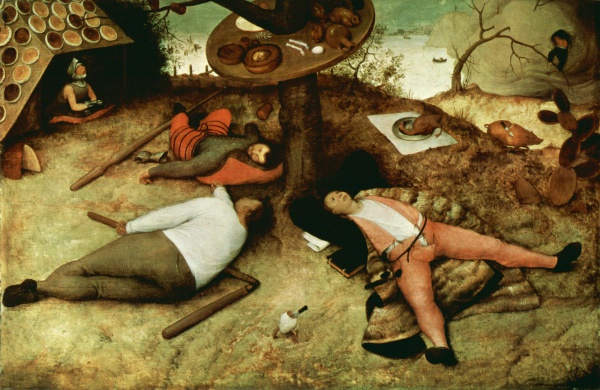Facts About The Land of Cockaigne
"Het Luilekkerland" also known as "The Land of Cockaigne" is a captivating 1567 oil painting by Pieter Bruegel the Elder. This artwork transports viewers to a mythical realm brimming with food and drink, but its allure goes beyond mere opulence. Bruegel employs this scene to satirize the spiritual emptiness that arises from overindulgence and laziness—two of the seven deadly sins.
In the painting, a clerk, a peasant, and a soldier are depicted dozing beneath a table tied to a tree, surrounded by an almost absurd abundance of food and drink, symbolizing their gluttony and sloth. The arrangement of the three men, fanned out like spokes of a wheel under the tree, suggests a deeper political commentary. Some interpretations argue that this composition is Bruegel's critique of the Dutch people's complacency during the Dutch Revolt, a period marked by significant political and religious upheaval.
Intriguingly, some scholars have analyzed this painting through the lens of Freudian theory. They propose it represents the oral stage of psychosexual development, where individuals derive pleasure from activities such as eating. The plentiful food in the painting underscores how people can become fixated on oral gratification.

 France
France